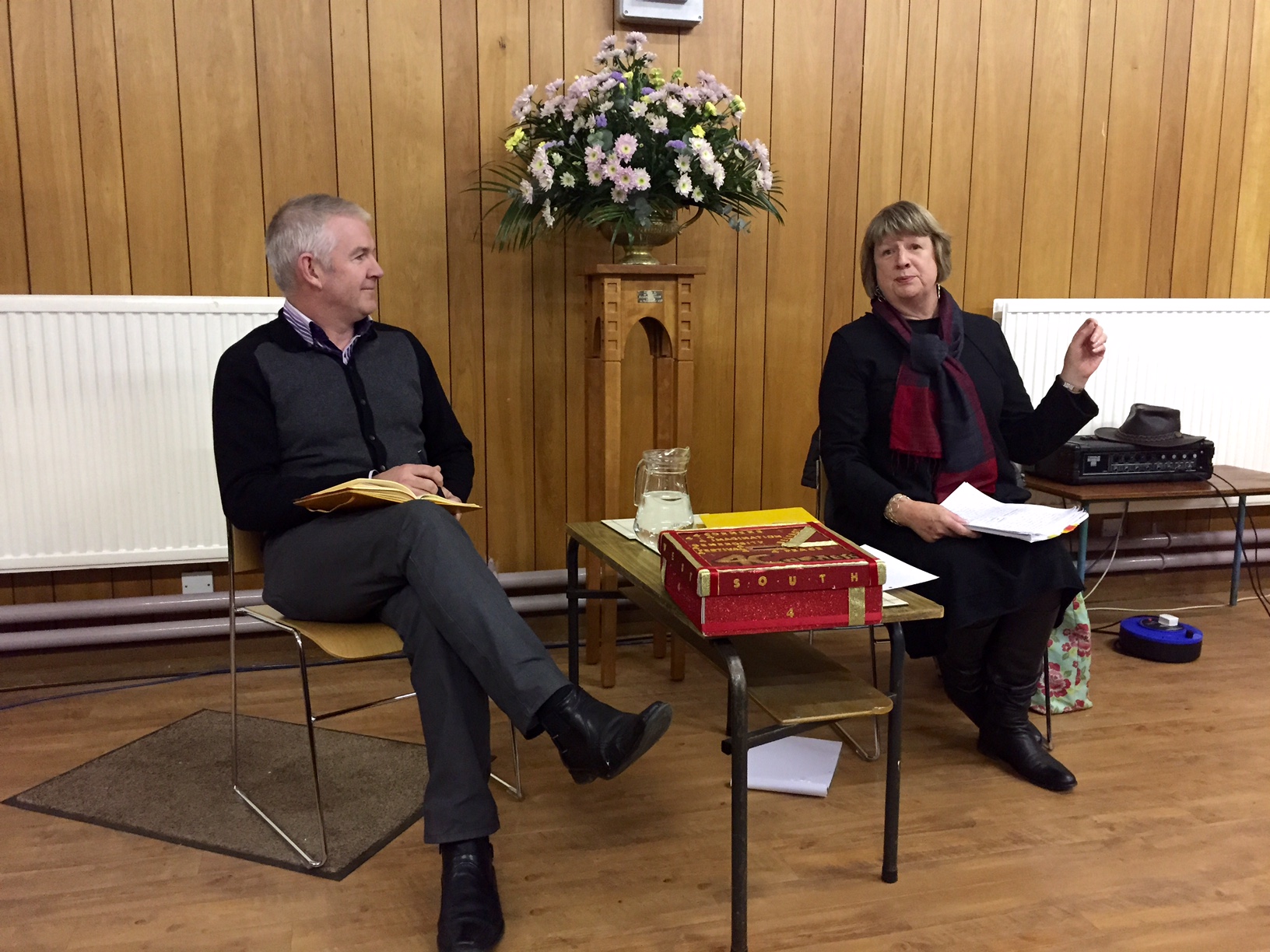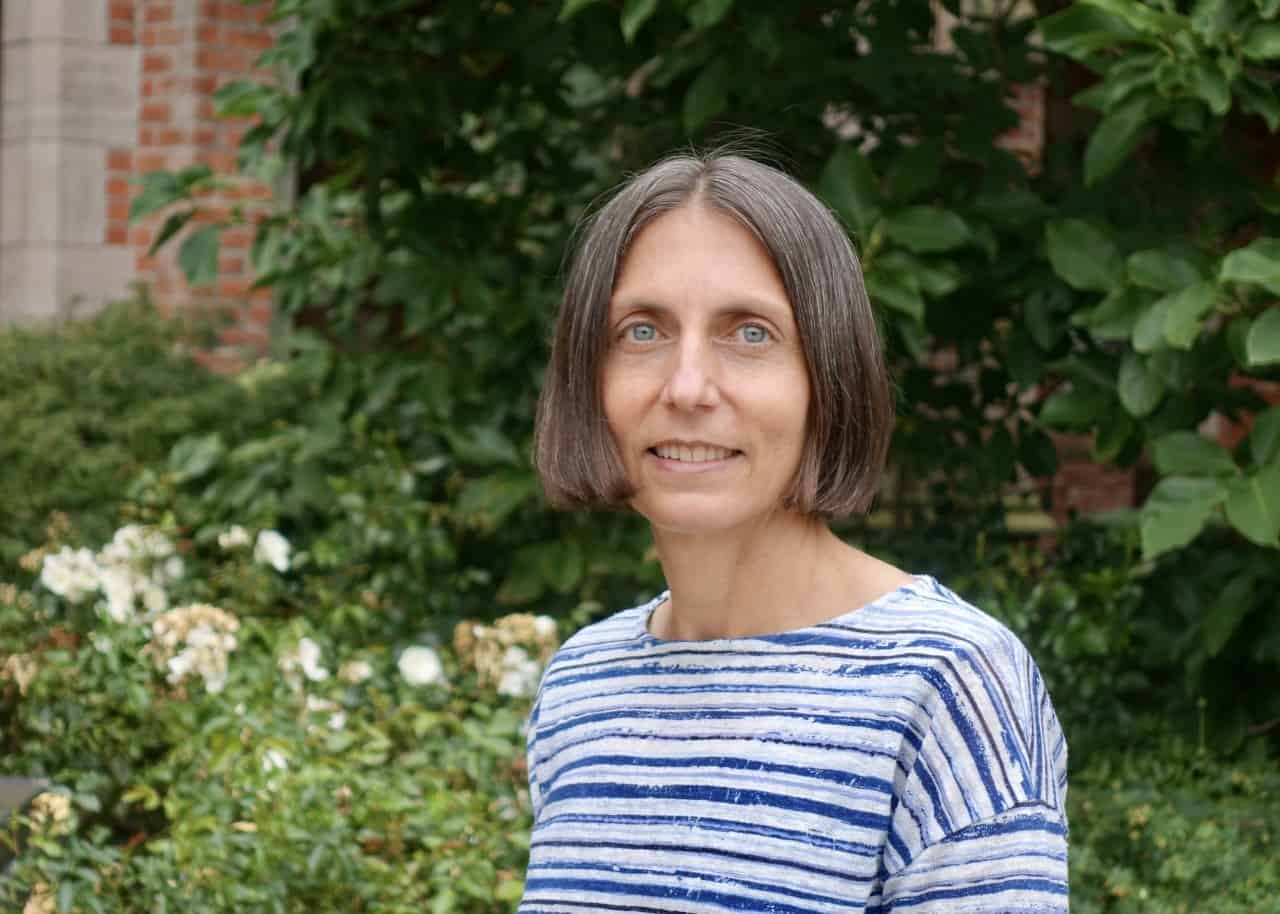 Townsend Street Presbyterian Church in West Belfast is nestled alongside a peace wall, with a heavy gate that is usually closed at night to stop the flow of traffic through the street. Last night a special dispensation was granted to keep the gate open till 9.30 pm, facilitating those who wanted to hear journalist Vicky Cosstick speaking at the church on her forthcoming book, Belfast: Towards a City Without Walls.
Townsend Street Presbyterian Church in West Belfast is nestled alongside a peace wall, with a heavy gate that is usually closed at night to stop the flow of traffic through the street. Last night a special dispensation was granted to keep the gate open till 9.30 pm, facilitating those who wanted to hear journalist Vicky Cosstick speaking at the church on her forthcoming book, Belfast: Towards a City Without Walls.
The book will be published by Colourpoint in June and include photographs by Frankie Quinn. It will include a forward from leading academic John Paul Lederach, whose book The Moral Imagination Cosstick described as ‘my professional bible.’
Cosstick’s talk was part of the ongoing 4 Corners Festival, which aims to encourage people to attend events in parts of the city that they would not normally visit.
Cosstick, who also has a background as an academic, pastoral theologian, church worker, and change facilitator, was born in Eritrea to an American mother and an English father. The family moved back to England when she was a child. She wrote her first article about Belfast for the New York Daily News in 1978 and became interested in Belfast’s walls in 2013 when she visited the city to write a story about the 15th anniversary of the Belfast/Good Friday Agreement.
When the chair of the event, Glenn Jordan, asked Cosstick what qualified her to ‘write about our walls?’, Cosstick good-humouredly declared, ‘nothing!’ She then described how her curiosity about the walls turned to shock when she discovered that there are about 100 in the city, 40% of which have been erected since the Agreement.
Cosstick’s shock and curiosity led her on a journey where she interviewed more than 100 people who are directly engaged with the walls, including community workers, politicians, civil servants, residents, artists and architects, church ministers and black taxi drivers.
She also was spurred by a commitment made by the Office of the First Minister and Deputy First Minister, in the ‘Together, Building a United Community’ (TBUC) Document in 2013 to bring the walls down in the next ten years.
Cosstick said that the book:
‘tells the story of the walls from the point of view of everyone around the walls. My goal was to listen to multiple voices at the same time without making judgements. … I wanted the book to be essentially positive and constructive, so I focused on grassroots processes – stuff that doesn’t hit the headlines. … So the book may not be what people expect. It is quite eclectic and personal.’
The book includes extensive profiles of the eight International Fund for Ireland (IFI)-funded programmes which are tasked with bringing the walls down. Cosstick described this as ‘the heart of the book.’ During the question and response session, some members of the audience questioned whether such programmes were only dealing with the ‘symptoms’ of the problem rather than the root causes.
Cosstick responded that she saw it as a ‘both/and’ rather than an ‘either/or’ situation, arguing that the ‘structural targets’ of the IFI programmes had forced those trying to implement them to ‘learn that things on the ground must change before structures change.’
She added that she also saw the walls as ‘actors’ in their own right, rather than simply symptoms of other problems:
‘The walls make sure that people are incarcerated with people like themselves. … And there’s some evidence that rather than protecting people, the interfaces actually attract violence. So they are more insidious than just being barriers.
… There are also high levels of denial about the levels of trauma in interface areas. The fear of the past affects how people see the future. People recount incidents from 20 years ago as if they happened yesterday. It is as if trauma is holding up the walls.’
Cosstick read a section from the book profiling the ‘Our View’ project, facilitated by artist Rita Duffy and youth worker Rory Doherty, which featured the stories and artwork of 21 young people from north and west Belfast. Her account captured both the effects of trans-generational trauma, as well as the empowering impact of the project, on the young people who were now moving on with their lives and hoping for better futures for their children.
She also singled out four initiatives which she sees as having the potential to prompt change at the grassroots, including:
- The 4 Corners Festival (which Cosstick also profiled in 2014 in The Tablet)
- The Make it Work Campaign (a civil society campaign which Cosstick credited with providing behind-the-scenes support during the recent Stormont talks)
- The Anti-Sectarianism Charter pioneered by Roisin McGlone of Interaction Belfast
- The singing of the international Charter for Compassion, instigated by Frank Liddy and Rev Bill Shaw
Cosstick added that ‘none of these initiatives are grant-funded, and they deserve more support.’
Cosstick refused to be drawn on whether OFMDFM would meet its target of bringing down the walls by 2023, playfully telling the audience that they would have to read the book for her assessment.
But she did point out that the TBUC document had been ‘rushed out’ with no ‘mechanism’ for bringing down the walls, and it was only a ‘coincidence’ that the IFI had settled on a similar commitment that has provided mechanisms for engaging with the walls. She said:
‘There is no central pot of money for bringing down the walls. … But I am convinced that in his mind David Cameron sees the walls as important and costly. … A start would be for [the government] to designate a central pot of money for bringing down the walls.’
Cosstick also replied to concerns that it was mainly outsiders and middle-class do-gooders who wanted the walls to come down, and that this did not respect the wishes and life experiences of those who live closest to the walls.
She referenced Lederach’s admonition that we must listen to those who have been most traumatised and who appear most slow to change – those who give us the ‘gift of pessimism’ that helps us to make realistic decisions. She said that the walls certainly will not be dismantled without the consent of residents. But she added that those who live near interfaces have a life expectancy that is ten years less than the rest of us, and that figures for poverty, poor health, and suicide are all higher in interface areas.
If we agree with Cosstick that the walls are both symptoms of deeper problems and actors, in and of themselves, that cause problems, it is in everyone’s interest to create city without them.

Gladys is a Professor of Sociology at Queen’s University Belfast and a member of the Royal Irish Academy.
She is also a runner who has represented Ireland and Northern Ireland. She blogs on religion and politics at gladysganiel.com
Discover more from Slugger O'Toole
Subscribe to get the latest posts to your email.